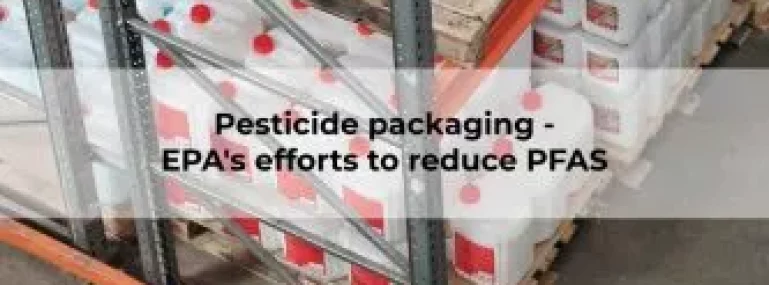The U.S. Environmental Protection Agency (EPA) works diligently to address per-and polyfluoroalkyl substances (PFAS) in the environment. And, provides updates in testing pesticide products and containers for PFAS.
As of 29 September 2021, The Environmental Protection Agency (EPA) releases a validated method for the detection of the presence of 28 PFAS compounds in oily matrices, such as pesticide products formulated with oil, petroleum distillate, or mineral oils. The US EPA modified Method 537.1 for the oily matrix Method. PFAS were previously detected in high-density polyethylene (HDPE) containers that were fluorinated by this method. It is mainly used for drinking water analysis.
Testing oily matrix products for PFAS will be easier with the new method, according to pesticide manufacturers, state regulators, and other interested parties. They will be able to identify PFAS contamination. By encouraging companies to engage in good product stewardship and notify EPA if they find PFAS in their products, EPA hopes to eliminate PFAS from the environment.
The EPA used this oily matrix method to assess three samples of stored mosquito control pesticides in collaboration with the Maryland Department of Agriculture. PFAS was not detected in any test sample at or above the Agency’s method limit of detection after the Agency thoroughly analyzed the samples and underwent a detailed quality assurance and quality control process. In terms of contamination, the Agency has only identified PFAS contamination in mosquito control pesticide products originating from fluorinated HDPE containers used in the storage and transportation of another mosquito control pesticide product.
To determine the extent of the problem and its potential impact on public health and the environment, the EPA will use all available regulatory and non-regulatory tools. EPA will test for additional fluorinated containers containing PFAS in them. As part of its efforts to create awareness of this emerging issue and discuss expectations for product stewardship, EPA works with other federal agencies and trade associations. Additionally, the EPA encourages the pesticide industry to explore alternative packaging options, such as steel drums and non-fluorinated HDPE.
State and local governments that could be affected by pesticide containers containing PFAS will continue to receive guidance from EPA, in collaboration with other federal agencies.





